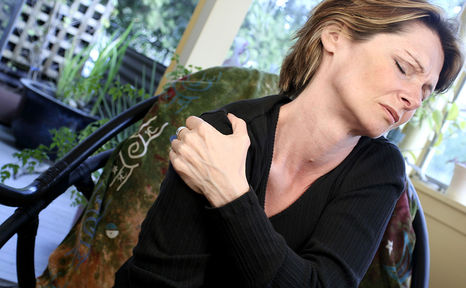


According to the Arthritis Foundation, there are 100 forms of arthritis and related diseases affecting approximately 46 million Americans today. The two most common forms of arthritis are osteoarthritis (OA) and rheumatoid arthritis (RA).
According to Osteoarthritis Treatment.Net, there are an estimated 20 million Americans who suffer from osteoarthritis. According to the American College of Rheumatology, more than two million Americans suffer from rheumatoid arthritis. There is currently no cure for osteoarthritis or rheumatoid arthritis, but there are many successful treatments for both conditions.
Most people seem to think that OA and RA are similar, but they differ in many ways. While OA is the most common form of arthritis, RA is the most crippling. OA is a wear and tear form of arthritis caused by the breakdown of the joint cartilage. RA is a chronic, inflammatory form of arthritis.
Osteoarthritis
Osteoarthritis is a degeneration of the cartilage (this is the slippery tissue around the end of the bones in a joint) and this degeneration causes stiffness and pain. The cartilage has no nerve endings so the damage is done before sufferers notice any pain or indication of the disease. The deterioration forces the bones to rub together causing a great deal of discomfort, stiffness and pain. The disease is gradual and the deterioration can affect individuals as young as age 40.
Rheumatoid arthritis
Rheumatoid arthritis, on the other hand, is believed to be a result of the immune system malfunctioning and attacking healthy tissues. The lining of the joints are primary affected by RA but the disease can also attack the organs. Inflammation in the joints eventually leads to erosion of bone and cartilage, and pain, stiffness and swelling occur. RA can occur at any age, even in children, but it is most commonly diagnosed in people in their 30s. RA can affect all the joints of the body including the hands, feet, neck and shoulders. Secondary symptoms include fever, anemia, fatigue, and rashes.
OA is a consequence of aging and risk factors including injury, repetitive or stress of joints, being overweight and family history and genetics. With RA, there has been much research on the abnormal response of the immune system. However, there is no specific known cause but theories look at genetics and triggering events.
The conditions also vary in terms of symptoms. Joint stiffness and pain with OA is a result of activity or inactivity. Morning stiffness can last a half hour or less and joint pain is much worse towards the end of the day. Bone spurs, bony enlargements and limited range of motion are characteristics of OA. Symptoms of RA include: joint pain, joint stiffness and swelling, redness and warmth near the affected joints, restricted range of motion, stiffness that lasts more than hour, small bones of the hands and feet are affected, extreme fatigue and malaise, and rheumatoid nodules. RA can also affect the heart, lungs and kidneys.
OA treatments focus on pain relief and restoration of function in affected joints. Anti-Inflammatory drugs, analgesics, and steroid injections treat pain and inflammation. Physical therapy stabilizes and strengthens joints. Heat, rest, reduction of weight, massage, and acupuncture are also methods of treatment and management of OA.
RA treatments focus on medications that fall into five categories: biologics, such as Humira and Enbrel, disease modifiers such as methotrexate, corticosteroids, such as prednisone, NSAIDs (Celebrex, Naproxen), and analgesics for relief of pain. Other treatment focuses on pain relief and management and as a last result, surgery of deformed joints.
OA affects over 20 million Americans and affects males more frequently than females. All races are affected equally by OA.
There are an estimated 2.1 million Americans affected by RA and 75% of those are women. However, men, women and children can be affected with RA. The typical age range for RA is age 30 to age 60.
There is currently no cure for osteoarthritis or rheumatoid arthritis. New drugs, however, are allowing people to live productive lives while self-management can help reduce pain and minimize the chance of disability.
Copyright © www.orthopaedics.win Bone Health All Rights Reserved